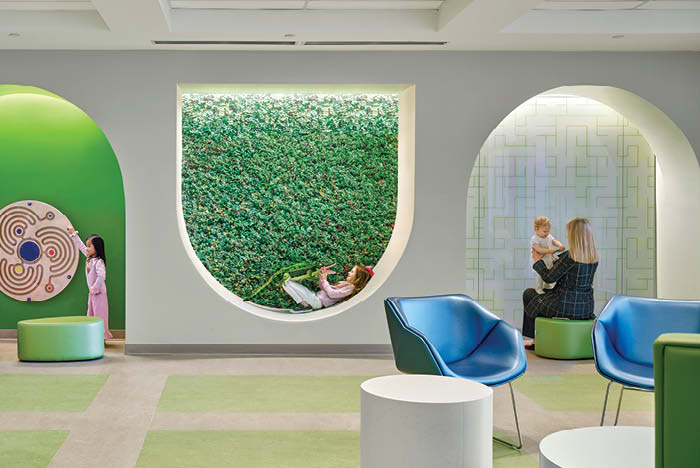Written By Cam Waller, for Accessibility.com, October 16, 2023

In today’s world, digital spaces are just as much a part of daily life as physical ones, so they need to be just as inclusive and accessible. Autistic individuals can have unique and diverse needs when engaging effectively in a digital space. Sensory-friendly design can make a big difference when producing digital environments that support and empower autistic users.
By understanding the unique needs and challenges faced by autistic individuals, designers can create digital spaces that are more accommodating and conducive to their sensory sensitivities. This article explores the importance of sensory-friendly design in digital spaces and provides insights into creating a more inclusive online experience for autistic users.
Understanding autism and sensory sensitivities
Autism Spectrum Disorder (ASD) is a neurodevelopmental condition. Most people know that social interaction, communication, and behavior differences can characterize it. And many individuals on the autism spectrum also experience sensory sensitivities, ranging from a heightened sensitivity to certain stimuli, such as lights, sounds, textures, or smells, to diminished responsiveness to others.
Since they involve the senses, it may be obvious how these sensitivities can cause challenges in the physical world. But they can also significantly impact experiences in digital environments, making it crucial to design with their needs in mind.
The impact of sensory-friendly design
The sensory-friendly digital design aims to create digital spaces that consider the sensory sensitivities of individuals on the autism spectrum. By incorporating sensory-friendly features, designers can enhance accessibility, reduce sensory overload, and provide a more inclusive digital experience.
Sensory-friendly design goes beyond mere compliance with accessibility standards. It considers the specific challenges faced by autistic users, providing them with an equal opportunity to engage and navigate digital resources.
Design considerations for sensory-friendly digital spaces
Accessible design, inclusive design, universal design: though not identical, these methodologies overlap. One thing they have in common is prioritizing the needs and experiences of users. Keep this core tenet in mind when considering the following.
Visual design
Many people often think of visual design primarily in terms of branding. But the way it impacts usability also says a lot about the identity of a business or organization.
A sensory-friendly interface should:
- Have a clean, uncluttered layout with ample white space to reduce visual distractions and cognitive load.
- Provide options for adjusting font size, line spacing, and color contrast to accommodate visual preferences and potential difficulties.
- Avoid flashing or rapidly changing visuals that can trigger sensory overload or discomfort.
Auditory considerations
Plain text pages are almost unheard of these days. Multimedia is everywhere. Sensory-friendly multimedia implementations will:
- Feature controls to adjust or mute sound elements, allowing users to customize their audio experience based on their sensitivities.
- Avoid auto-playing audio or videos that can startle or overwhelm users with sensory sensitivities.
- Provide closed captions or transcripts for multimedia content to support individuals with auditory processing difficulties.
Interaction and navigation
A successful design helps the user achieve their goal. To support users with sensory sensitivities:
- Organize navigation to be clear and intuitive to reduce cognitive load and provide predictability.
- Use consistent design patterns and minimize complex animations or transitions that may cause sensory overload or confusion.
- Provide options for customization, such as adjusting animation speed or turning off certain interactive elements, to cater to individual needs.
Content presentation
Even the presentation of static content can impact user experience and accessibility.
To keep content accessible:
- Break down information into manageable chunks using headings, subheadings, and bullet points to enhance comprehension and ease of navigation.
- Offer alternative formats, such as plain text versions or simplified language options, to cater to different cognitive processing styles.
- Provide visual cues and step-by-step instructions to assist with task completion and understanding.
Collaboration and user feedback
It can take time to figure out where to start and how to overcome the challenges that sensory-friendly design can present. It takes time to understand what sensory sensitivities are. And while it may be easy to understand how some translate to digital spaces, the fact that technology is always evolving means that the way it can engage the senses is also changing.
Collaboration with autistic individuals and their communities is essential when building sensory-friendly digital spaces. There is no universal autistic experience or need, so engaging them in the design process and seeking their feedback can provide valuable insights and perspectives. This, in turn, enables designers to understand their needs and preferences better.
And conducting regular usability testing with autistic users can help identify potential barriers and areas for improvement, leading to more inclusive design solutions.
Conclusion
Sensory-friendly design is vital to creating digital spaces supporting autistic individuals. By considering their unique sensory sensitivities and designing with inclusivity in mind, we can create digital environments that are more accessible and usable for individuals on the autism spectrum.
